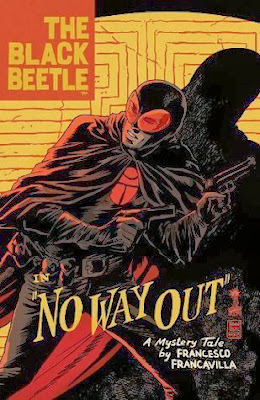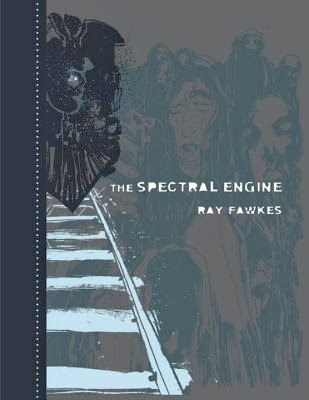Best Graphic Novels of 2013 Part 3 of 3
The 10 best graphic novels that were published in 2013:
The Black Beetle Volume 1: No Way Out - Francesco Francavilla (Dark Horse)
Francavilla has recently become one of my favorite artists of the past few years. You get the feeling with this first volume of The Black Beetle that Francavilla is giving us the barest of introductions, which is fine with me. Colt City could be any noir city, and while The Black Beetle has certain noir hero characteristics as well, we really don’t learn much about him in this installment. Again, that’s okay with me, because Francavilla’s art is so wonderfully matched to the noir genre.
Copra Compendium One - Michel Fiffe (Bergen Street Comics Press)
I bought Copra on a whim at my local comic shop and was just blown away at all the energy, action and imagination on display. It might be a little hard to find, but it’s worth seeking out. Read more about it.
Delilah Dirk and the Turkish Lieutenant - Tony Cliff (First Second)
If you want the short review, it’s two words: pure fun. If you want to know a little more, then I will pontificate.
The Fifth Beatle: The Brian Epstein Story - Vivek Tiwary, Andrew C. Robinson (Dark Horse)
I am absolutely in love with the art in The Fifth Beatle and think the story works well in most places. It's good to see Brian Epstein get some well-deserved praise. For more on this title and Tiwary, check out this interview with the author at The Comics Alternative Podcast.
Hawkeye: My Life as a Weapon - Matt Fraction, David Aja (Marvel)
I don’t read a lot of Marvel titles, but I enjoyed both My Life as a Weapon and Little Hits.
The Massive, Vol. 1: Black Pacific - Brian Wood, Kristian Donaldson, Garry Brown (Dark Horse)
Probably my second favorite book of the year. Read more about it.
Mind MGMT - Matt Kindt (Dark Horse)
Mind MGMT is the perfect read for people who enjoyed the TV show Lost until it reached a certain point, then became disgusted with it. Mind MGMT’s first volume, The Manager, is very, very smart, as is its second, The Futurist. Both are highly recommended.
Nathan Hale’s Hazardous Tales - Nathan Hale (Harry N. Abrams)
One Dead Spy
Okay, I’m cheating a bit here. The first two books were released in 2012, but I didn’t read them until 2013. I’m bending the rules because not enough people have heard about these great books that make history fun and fascinating. Don’t miss them!
Nowhere Men, Vol. 1: Fates Worse than Death - Eric Stephenson, Nate Belegarde (Image)
Here it is - my pick for the best graphic novel of 2013. No other title stayed in my head and made me think of all the implications in it quite like Nowhere Men. Find out why.
The Spectral Engine - Ray Fawkes (McClelland & Stewart)
The Spectral Engine might not be your typical horror graphic novel, but its dark stories, combined with stark black and white art, make it a gripping read. Find out more.
Honorable Mentions
The First Kingdom, Vol. 1: The Birth of Tundran - Jack Katz (Titan Comics)
The First Kingdom isn’t really new; it first appeared in the 70s in single issues, but 2013 (and into 2014) marks the first time the six-volume black-and-white series will be reprinted in its entirely in handsome hardcover editions. And it’s epic. Read more about it.
Heck - Zander Cannon (Top Shelf)
Looks can be deceiving, and in this case, that’s a good thing. Intrigued about this black-and-white graphic novel? Read on...
Lazarus, Book One: Family - Greg Rucka, Michael Lark (Image)
It’s too early to tell how good Lazarus is going to be over the long haul, but for now, it’s quite good. Investigate more.
New School - Dash Shaw (Fantagraphics)
Intrigued. Often fascinated. Confused. Eager for more.
Those are the four words and phrases that best describe my reaction to Dash Shaw’s New School, my first exposure to Shaw. Thanks to the guys at The Comics Alternative, I decided to check out this coming-of-age story set in a strange, distant land. Shaw is showing us something about sibling rivalry, but also how to navigate a world we don’t really understand. I am amazed at Shaw’s storytelling, but am not quite sure how to interpret his uses of color. This is a definite read-again book.
The Reason for Dragons - Chris Northrop and Jeff Stokely (Archaia)
Another book for younger readers (approx. ages 12 and up) that I hope finds its audience. You can read more about it.
So... Tell me about the best graphic novels you read published in 2013.
















































